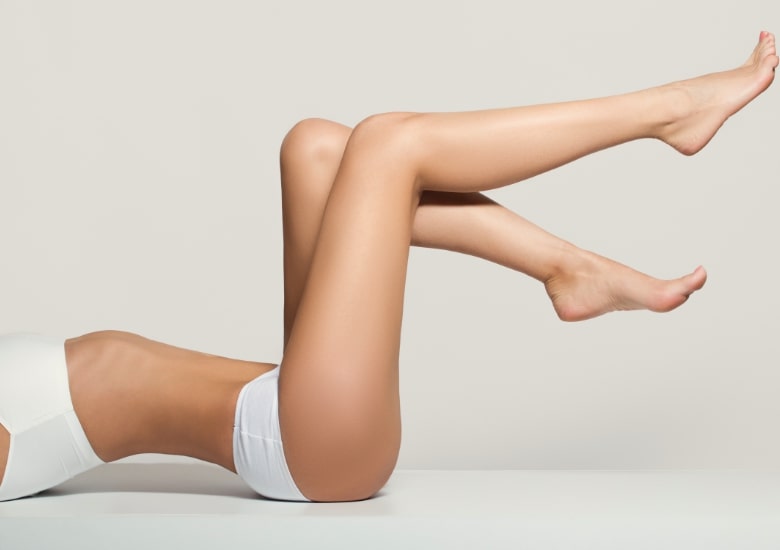Varicose veins
INTRODUCTION TO
Varicose veins
Varicose veins are unnaturally twisted, dilated, and swollen veins that form close to the skin’s surface. The leg’s veins are the most frequently affected, though it can happen to any vein in the body. Weakness or damage in the valves, which allows the blood to gather inside the veins and “pump out” within the skin, is the underlying process that results in this condition. A few factors can increase the risk of developing Varicose Veins, such as obesity,
pregnancy, family history, and age.
There are various symptoms that you might experience even though for the majority of people, vein appearance is more of a concern than pain. Some of these symptoms might include itching, tiredness, swollen legs/ feet, and muscle cramps.
The veins can be appearing blue, dark purple, and frequently protruding, rendering them aesthetically unpleasing. Because of this, many women choose to begin treatment as soon as they appear, as this issue changes physical appearance drastically, can have an immensely negative impact on a woman’s self-esteem, and cause anxiety, and in some cases depression.


Consultation
Your doctor may advise a test called a venous Doppler ultrasound of the leg to identify varicose veins. This non-invasive procedure employs sound waves to examine blood flow through vein valves. This ultrasound of the leg is to be used to locate blood clots. He will then go through the scan’s findings with you and walk you through a personalized treatment plan.
In order to determine if you are a good candidate for vein treatment, the doctor will perform a full medical evaluation and inquire about your medical history. You will be required to cease smoking for some weeks prior to the treatment, and also refrain from using anti-inflammatory drugs and herbal supplements, as they have blood-thinning properties.
There are a few things that can be done before any treatment to increase its chances of success and improve blood flow, such as wearing lax clothing, avoiding standing for lengthy periods, and wearing special compression stockings.
Procedure
There is a variety of different procedures that our clinic offers to treat varicose veins:
- SCLEROTHERAPY: During this medical procedure, a solution is injected straight into
the vein. The fluid irritates the vessel’s lining, producing swelling and clotting. The vessel
eventually transforms into scar tissue, which fades from view and is absorbed into the
surrounding tissue. Typically, it lasts for around 30 minutes. - ENDOVENOUS LASER TREATMENT: Minimally invasive procedure using a
catheter that is inserted into the vein and has a laser fiber inside it. The laser heats up the
vein, which causes it to close up as the catheter is gradually retracted. Larger leg varicose
veins are typically treated with this sort of laser therapy. - SIMPLE LASER TREATMENT: This innovative procedure uses a laser to deliver short
bursts of light energy to the vein, causing it to fade or dissolve. It is done on the surface of
the skin. This sort of laser treatment can be used to address tiny varicose veins close to the
skin’s surface without surgery or incisions. - RADIOFREQUENCY LASER TREATMENT: The optimal treatment option for bigger
varicose veins. Uses the same technique with a catheter as an Endovenous Laser Treatment,
but with Radiofrequency energy instead of Laser energy. - PLEBECTOMY: Used to remove smaller Varicose veins, without the use of stitches, by
making minimal incisions. - VEIN STRIPPING: surgical outpatient procedure, during which a small skin incision is
used to either remove the dilated vein or tie it off. Blood flow is handled by deeper veins in
the leg, therefore removing the varicose vein won’t stop blood circulation.
Most of these treatments take between 30 minutes to one hour and patients
experience almost immediate results and relief from pain, as well as a vastly improved
appearance of their legs.

Recovery
Your recovery following vein treatment will be different depending on the treatment you undergo.
In the case of Sclerotherapy, you will need to wear a compression hose for two to four weeks to improve blood flow. As for the other vein therapy treatments, most patients can go home the same day and are advised to start walking or engaging in other simple activities as soon as possible, although strenuous activities should be avoided for several weeks in all cases. Some pain might be experienced during the first few days.
Risks
Varicose Vein treatments are generally safe, and routine procedures, but some risks might be involved, generally tied to Radiofrequency or Laser Treatments. These are:
- bleeding
- scarring
- formation of blood clots
- inflammation
- bruising
- nerve damage
- sling discoloration of the area
WE ARE HERE TO HELP YOU
Do you have any questions?
Let our medical experts answer all your inquiries and offer the solution that best fits your cosmetic needs.


